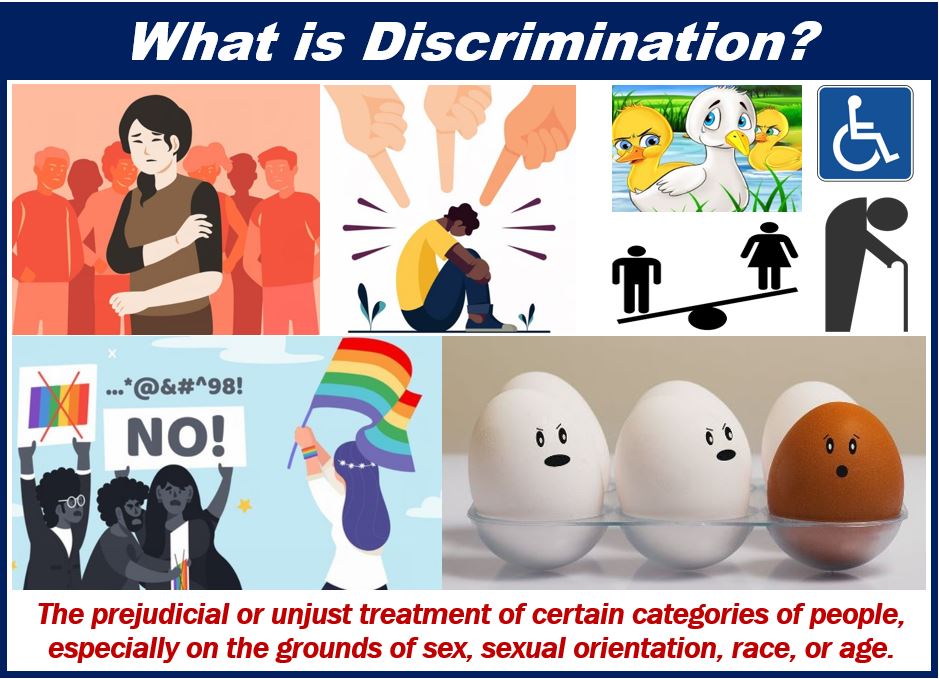The word discrimination is thrown around frequently and people are quick to pick up on it whenever they assume there is some sort of unfairness going on. There are various rules implemented to make sure that discrimination is reduced as much as possible and people are given an equal chance at everything.

What is discrimination?
Discrimination essentially means the different (mostly negative) treatment of a person based on specific traits they have such as their race, religion, or skin. It is deemed as something that many individuals face daily, at their workplace or when they are being recruited.
At a workplace, it is important for the management to negate any kind of behaviours that prove to be unjust and unfair; they, themselves, should also follow a method that ensures that they are not discriminating anyone in their workplace or while they’re recruiting others.
Different types of discrimination
The management must make sure to identify any sort of discrimination that occurs in the workplace. But to do this, they need to know the different types of discrimination present.
The Equality Act 2010 identifies four main types of discrimination that occur in a workplace including direct and indirect discrimination, harassment, and victimization. But discrimination can be extended to 7 to 8 different types. Common diversity challenges include age discrimination, disability discrimination, gender reassignment discrimination, and marriage and civil partner discrimination. Each of these exists and can be spotted by the management or employees if anyone is discriminating against others.
Identifying the different kinds of discrimination
While knowing about the different forms of discrimination is important, you must also know how to spot discrimination at your workplace. Let’s look at how you can identify the different kinds of discrimination.
-
Direct discrimination
This happens when a person is treated unfavourably or unfairly because of their protected characteristics. These can be based on a person’s race or religion. It is known as discrimination based on the association of a particular trait. It can be easily detected in the workplace as people generally have an obvious behaviour against others with different race or religion. Another example is pregnancy discrimination. Nowadays, pregnant women are still being deprived of promotion or being hired.
-
Indirect discrimination
Indirect discrimination is relatively difficult to detect as it might not be done on purpose. Most of the times, indirect discrimination occurs because of a person’s lack of understanding of the law.
-
Harassment
Harassment comes in all sorts of shapes and can be detected rather easily at a workplace. It constitutes bullying, inappropriate name-calling, and abuse of all forms. It extends to any unwanted behaviour by a person that can be because of protected characteristics or any unfavourable sexual advances.
These can be identified as people wanting to make others feel degraded, intimidated, or humiliated. It is based on the perception of the victim and what they feel and not the harasser.
-
Victimization
Victimization occurs at a workplace when an employee is put at a disadvantage, harm, or loss because of supporting discrimination complaint, allegation, or any other form of action that might jeopardize the higher authority. The mere idea of wanting to support or providing evidence to a case of discrimination can lead to victimization.
-
Age discrimination
People are continuing with their work even after they surpass the age of 50 which leaves room for a lot of discrimination. The wider the gap between co-workers, the higher chances of discrimination. It can be either from the higher or lower end. The Equality Act 2010 protects individuals from unfair treatment because of age and harassment.
-
Disability discrimination
People who “appear” different from the rest are more susceptible to being discriminated. This includes people with mental and physical disabilities. It is easy to identify any sort of discrimination against individuals with disabilities and the Equality Act 2010 protects such individuals from the main four types of discrimination mentioned above.
-
Gender reassignment discrimination
People who change their genders or in the process of changing their genders are susceptible to different forms of discrimination. Non-binary identities aren’t mentioned in the Equality Act 2010 but it is important to make sure that they aren’t discriminated against at your workplace.
-
Marriage and civil partner discrimination
Married couples, whether of the same or opposite genders have the same rights. Not recruiting people based on their marital status is counted as direct discrimination and putting married people at a disadvantage is deemed as indirect discrimination.
It is important to make sure that the management of a workplace understands the difference between each of the above discriminations. By understanding and implementing strategies, management will be able to spot and reduce different forms of discrimination across the workplace.
Interesting related article: “What is a Bully?“

